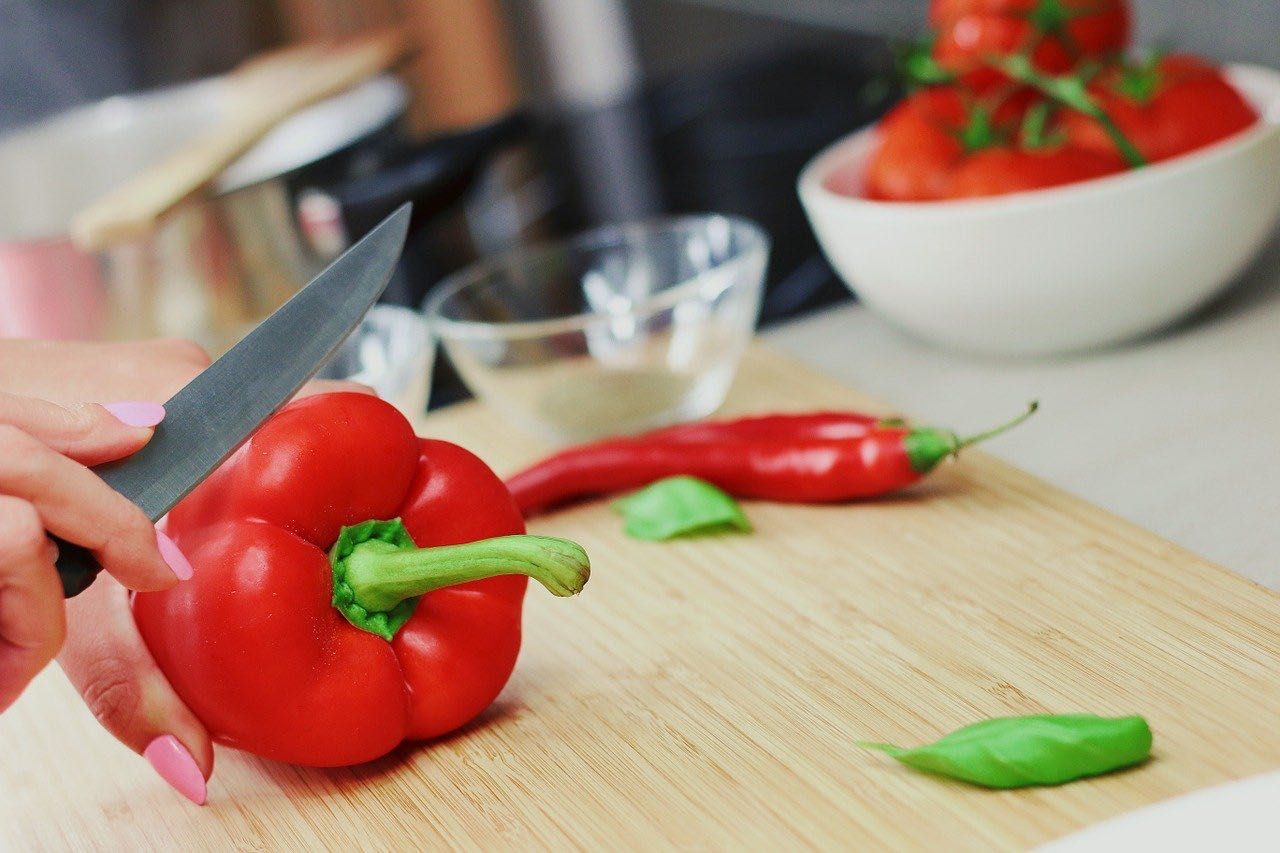Vegetables can be tricky to deal with, especially if you are just starting cooking. The cut vegetables’ size and shape can make a huge difference in the dish’s overall flavour and texture. The smaller pieces of vegetables in some recipes can make the dish better as it allows for more surface area for spices and herbs to impart flavour. The three most common and useful cutting techniques you will be using are slicing, dicing, and mincing. These are relatively easy, but you will need to practice a lot to get better. So stick with us as we show you the ropes of slicing, dicing, and mincing for all sorts of dishes.
What Are The Differences?
First of all, the fundamental difference among the following techniques and their usage is essential for every cook to know.
Slicing
A slice is a broad non-uniform piece. Random shapes and sizes that are about 1/4 length or about a dime in diameter. It can be harder to maintain the accuracy of chopping than dicing.
When this occurs, a recipe may involve small or medium chops, concentrating more on the parts’ size than their shape.
Dicing
Dicing is more standardized and accurate than slicing. Dicing is typically needed in recipes where the ingredients can remain uncooked. The sizes have to be more uniformed, and in most cases, they are about one-fourth of a square inch in size.
Mincing
Mincing is all about how small you can chop your vegetables. You usually would not have to worry about the uniformity or shape of the pieces. For some items such as garlic, mincing can even mean chopping them till they are turned to paste.
3 Things To Consider Before Beginning
1. A sharp knife is essential
Dull knives can be tough to work with and might lead to any sort of knife accident. For ease of cutting, try to invest in a knife sharpener.
If you are trying to cut stakes or meats, then it is best to rely on meat slicers. You can visit boatbasincafe.com to check out some of the best meat slicers available. With one of these, you will be able to set up your own grill fest.
2. Try laying a thin wet rag on the work surface under your cutting board if your cutting board appears to slip on your work surface. The rag will help to secure the cutting board in place.
3. Using the right kind of knife is very important. Each blade has distinctive features and usage to create different shapes and sizes.
To avoid cross-contamination, always wash, and disinfect your knife and chopping surfaces before and after you are done with cutting. If your knife becomes rusty, you can use white vinegar to eliminate that rust.
Now that we covered the basics of cutting methods, let’s look at using these cutting techniques on the most common vegetables.
How To Slice Dice & Mince An Onion
Step 1. Slicing An Onion
Start with slicing off the onion’s end. If you are a beginner, try to keep one end intact because it will hold together the onion pieces.
Then cut the onion in half. It will be straightforward and time-saving to peel the papery layers off the onion after slicing because of the many cut edges.
Some people go for linear slice cutting rather than the latitude technique. Cutting makes straighter slices in the longitudinal direction, while in latitude technique, it comes out half-round shaped slices.
Step 2. Dicing An Onion
Line up the slices in a straight position and then start cutting through those slices. Maintain uniformity and precision in each slice. Hold the onion in place as you dice your way through.
Step 3. Mincing An Onion
Mincing your onions into tiny bits can enhance the flavour since it can blend in with the whole dish at that state. You won’t have to worry about the texture or shape while mincing.
You will need to make a fulcrum with one hand as you place it over the end of your knife. After that, all you need to do is move your knife back and forth, and you will have nice minced tiny bits of onion ready to be used.
Slicing & Dicing A Bell Pepper
Step 1. Slicing A Bell Pepper
Bell peppers or capsicums are sliced like apples. You have to slice them vertically in half.
Then you need to pull the seed core and seeds out of the bell pepper. After removing the seeds, slice the pepper lengthwise with the skin facing down. It is much easier to slice on this side because the knife doesn’t slip.
Step 2. Dicing The Bell Pepper
Diced bell peppers are great for salads, soups, etc., recipes. Line up a couple of slices at 90 degrees angle and cut through the slices into squares to dice the bell pepper in a very finely shaped shape.
How To Slice & Dice A Sweet Potato
Step 1. Slicing The Sweet Potato
Slicing sweet potatoes are ideal when your dish’s main ingredient is only potatoes.
For baking or making roasted potatoes, people usually follow this slicing technique.
First, you have to peel the sweet potato and then start slicing it into nice round shapes. Always keep your fingers tucked in for safety measures.
Step 2. Dicing A Sweet Potato
Diced sweet potatoes are perfect for several different dishes because they take very minimal time to cook perfectly.
Make a line with some of the strips at a 90-degree angle to dice the sweet potato and turn those strips into nice cubes as you chop your way through.
Test the sharpness and grip before buying your preferable kitchen knife before buying. Your knife will significantly impact your cutting performance.
Final Thoughts
Once you have used all three techniques a couple of times, you will develop an instinct that will enable you to use your knife at a faster pace and more precisely. But remember, safety should be your top priority. Start slow, stay focused, and choose the best knife to cut any piece of vegetables for your recipe.








